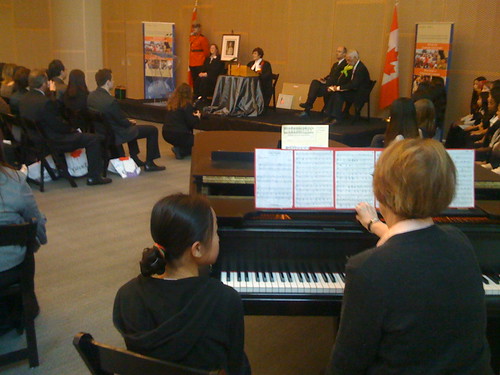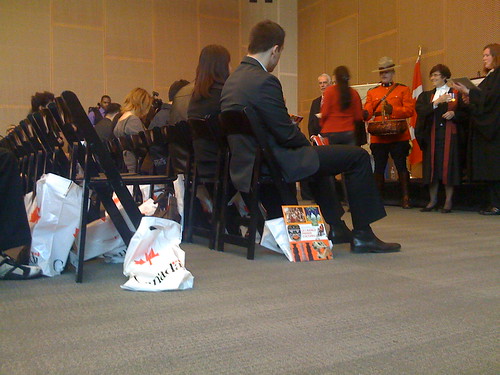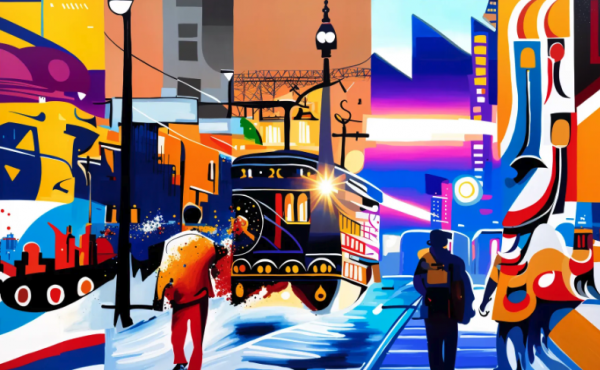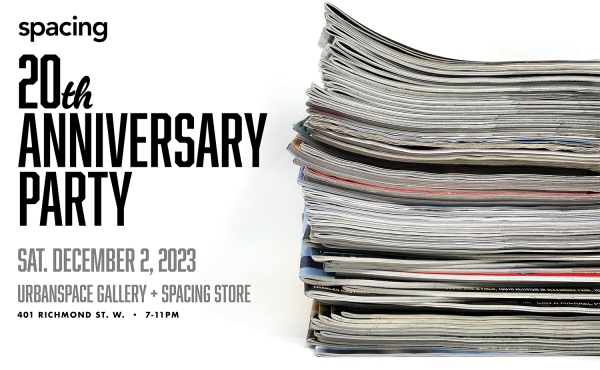
Spacing editor Shawn Micallef is the Blogger-in-Residence at the Art Gallery of Ontario’s Art Matters blog in anticipation of the grand re-opening of the new AGO. He will be cross-posting some of the entries here on Spacing Toronto. To comment on this post, click here and head over to Art Matters.
When my father became a Canadian Citizen in 1980 I remember only two things clearly: getting the day off from kindergarten and the Mountie in full dress uniform standing impossibly still at the front of the room. I don’t remember much about the room itself (it was in an office on the upper floor of a nondescript downtown Windsor building), the details of the ceremony or who else was there (my family, I assume, but I can’t quite picture any humans save for that Mountie).
This past Friday the first official visitors on (re)opening day at the AGO were a group of New Canadians who became citizens in an Institute for Canadian Citizenship (ICC) ceremony. The ICC is former Governor General Adrienne Clarkson’s legacy project. If the intention is to get people excited about becoming a Canadian, it’s a success. This was about as happy a room as I’ve ever been in.
I mentioned my 1980 story to the Mountie before everybody arrived, and perhaps went a bit overboard, saying he must be sutured into the memory of everybody who attends one of these events, and what an introduction to Canada he provides. He gave me a curious look, nodded, and said “yes, the uniform really is the symbol of Canada.”

I expected a citizenship judge to be somewhat officious and stern, but she sat at the front and started telling stories of what it is to be a Canadian, beginning with her own immigration experience from Italy in the 1950s. Then she told them about some of their rights, and then read from her personal collection of press clippings about the importance of voting and participating in Canadian culture (a “partnership” she called it). Apropos of the setting, she used the example of the Italian-Canadian donations to the Galleria Italia at the AGO as their “I love you” gift to Canada.
When you become a citizen these days, you get a flag, a “Canada bag” with a copy of the Charter of Rights and Freedoms (that the judge will tell you to read) and when the oath of citizenship is taken (to the Queen of Canada), everybody says their personal name in unison. After the formal part was done, the judge had everyone yell “I Am Canadian” and wave their flags — just like a Molson Canadian commercial — and listed where everybody who took the oath was from (Albania, Angola, Brazil, China, Columbia, India, Jamaica, Liberia, Nepal, Pakistan, Poland, Russia, Sudan, United States, United Arab Emirates and Venezuela) and had them wave their Canadian flag when their country was mentioned.
I might be a sucker for these sorts of things, but I liked the way the judge articulated citizenship for New Canadians — that they were not giving up their culture, but adding a new layer to it (but that their loyalty is to their new country). “Nobody was more proud than I was when Italy won the World Cup,” she said, using her own hyphenated identity as example. I’m sure there are those who disagree, but I think even those of us born in Canada should go through this, just as a reminder, and something that might increase voter turn-out at election time — or at least just sit in on one like I did. The feeling is infectious.

The other thing each New Canadian received was a free family pass to the AGO (and other Toronto museums). Throughout the ceremony, the judge and other speakers stressed how this was now their gallery too, and how the arts can and should be a part of their lives. Coming off a federal election where some of the campaign rhetoric implied that “ordinary” Canadians do not care about the arts, letting these folks know — from the first day they are citizens — that the arts are for them, seems like a good idea.
The other part is that the AGO — like that Mountie in 1980 — will now be inseparably sutured into their idea of what Canada is. That’s a considerably nicer memory than the fuzzy image of a windowless office with florescent lights and an acoustic drop ceiling that I have, and a bond that might produce some new Canadian artists in the coming years.


